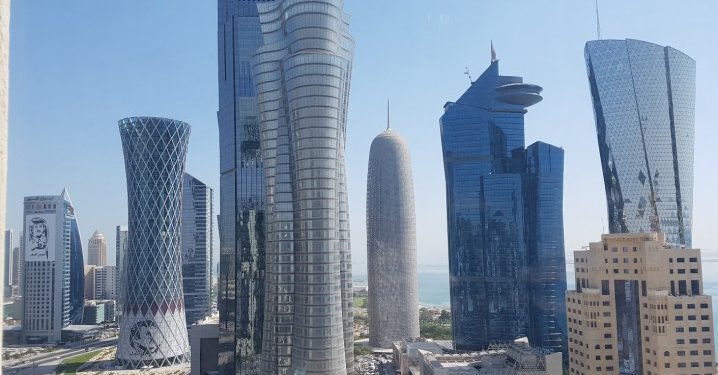Qatar’s economy has successfully absorbed the shocks from the 2014–16 drop in hydrocarbon prices and the 2017 diplomatic rift. The country’s economic performance improved in 2018. Real GDP growth is estimated at 2.2 percent, up from 1.6 percent in 2017, International Monetary Fund (IMF) announced yesterday.
The IMF, after concluding its latest Executive Board consultation with Qatar, noted the country’s banking sector remains healthy, reflecting high asset quality and strong capitalization. At end-September 2018, banks had high capitalization (CAR of 16 percent) and maintained strong profitability (ROA of 1.6 percent), low non-performing loans (ratio of 1.7 percent), and a reasonable provisioning ratio of 83 percent.
Banks are comfortably liquid, with a liquid-asset-to-total-asset ratio of 29.7 percent. Nonetheless, strong credit growth that outpaced deposits resulted in the system-wide loan-to-deposit (LTD) ratio of 103 percent which is higher than the CB’s guidance of 100 percent. After a period of rapid growth, real estate prices in Qatar are adjusting to new levels. According to the real estate price index developed by QCB, following an 82 percent increase during 2012–16, real estate prices fell by 15 percent during 2017–18.
The IMF Executive Board assessed that Qatar’s economy has successfully adjusted to the dual shocks of lower oil prices and diplomatic rift. Prudent fiscal policy, an appropriate monetary anchor, sound financial regulation and supervision frameworks and considerable buffers continue to underpin strong macroeconomic performance. Increased gas production, a slower pace of fiscal consolidation, infrastructure programs, and adequate credit growth will underpin growth over the medium term.
The fixed exchange rate regime remains appropriate, as it has provided a clear and credible monetary anchor, although the external position is weaker than implied by fundamentals and desired policy settings. Fiscal consolidation over the medium term would help close the estimated current account gap. Lower than-envisaged hydrocarbon prices constitute the main risk to the macro-financial outlook. Nonetheless, Qatar is in a position to weather such a shock, given significant buffers and prudent policies.
Qatar’s overall GDP growth is projected to reach 2.6 percent in 2019 from 2.2 percent in 2018, underpinned by a recovery in the hydrocarbon output and still robust growth of the non-hydrocarbon sector. The projected non-hydrocarbon growth for 2019 reflects the lingering multiplier effects of sustained increases in capital expenditures in the last few years, the gradual pace of fiscal consolidation, ample liquidity, and increased private sector activity. Medium-term growth will be supported by increased gas production from the Barzan field, a planned increase in LNG production capacity by 40 percent.
Fiscal consolidation is envisaged to continue, albeit at a slower rate. In 2019, expenditure restraint and lagged revenue impact of higher oil prices would result in further improvement of fiscal position to about 3 percent from 2.3 percent in 2018. Over the medium term, the fiscal position would be in moderate surplus due to broadly stable hydrocarbon prices and sustained expenditure control. A current account surplus of about 4.6 percent of GDP is envisaged for 2019 in line with the projected oil prices, and slower import growth than GDP. Over the medium term, the current account would be in modest surplus.
According to IMF, Structural reforms with emphasis on private sector-led growth and economic diversification would help support more inclusive growth. Authorities’ reform agenda pertaining to the business environment, special economic zones, labor law, increased foreign ownership limits, and privatization is welcome. While SEZs can be helpful in the short term, they should not constitute an alternative to economy-wide structural reforms. Domestic and export-market competition should be used as benchmarks to hold beneficiaries of government’s support accountable. Policy measures that focus on further improving the business environment, including improved contract enforcement and enhanced strengthened competition through reform of the insolvency mechanism, would buoy private sector-led growth. Laws that focus on ensuring equal remuneration and support gender equality would support inclusive growth.
The Peninsula
04/06/2019
























































